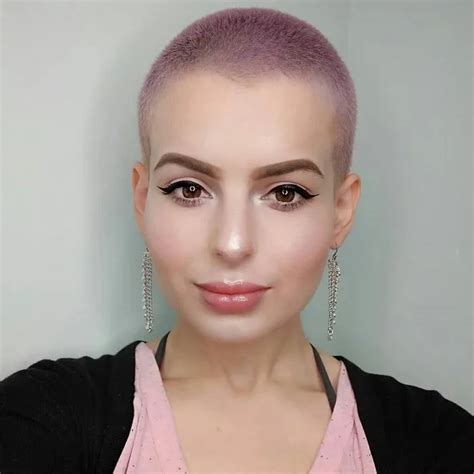Overview
At least 40% of women suffer from female pattern hair loss. This occurs due to genetics, hormones, and aging. However, women, unlike men, often have more options to conceal thinning hair.

Balding women may feel self-conscious about their hair loss, but there are many flattering haircuts that can help to camouflage the problem. The best haircut for a balding woman will depend on her individual hair type, texture, and facial features. But with the right cut, women can regain their confidence and feel beautiful again.
Haircuts for Different Hair Types
Thin Hair
- Pixie cut: This short, layered cut adds volume and movement to thin hair.
- Bob with bangs: Bangs can help to cover up a receding hairline or thinning crown.
- Asymmetrical bob: An asymmetrical bob can create the illusion of thicker hair.
Thick Hair
- Long layers: Long layers can help to weigh down thick hair and make it appear less bulky.
- Graduated bob: A graduated bob is a shorter bob that is longer in the front and shorter in the back. This can help to create the illusion of volume.
- Shaggy cut: A shaggy cut can add texture and volume to thick hair.
Haircuts for Different Facial Features
Round Face
- Asymmetrical bob: An asymmetrical bob can help to elongate a round face.
- Side-swept bangs: Side-swept bangs can help to narrow a round face.
- Long layers: Long layers can help to soften a round face.
Oval Face
- Any haircut: Women with oval faces can wear almost any haircut.
- Short pixie cut: A short pixie cut can help to accentuate the cheekbones.
- Long bob: A long bob can help to create the illusion of a longer face.
Square Face
- Asymmetrical bob: An asymmetrical bob can help to soften a square face.
- Side-swept bangs: Side-swept bangs can help to narrow a square face.
- Long layers: Long layers can help to elongate a square face.
Tips for Styling Balding Hair
- Use volumizing products: Volumizing products can help to create the illusion of thicker hair.
- Blow dry your hair upside down: This will help to lift your roots and create volume.
- Use hairspray: Hairspray can help to hold your style in place.
- Accessorize your hair: Headbands, scarves, and hats can help to add interest to your hair and conceal thinning areas.
FAQs
1. What causes female pattern hair loss?
Female pattern hair loss is caused by a combination of genetics, hormones, and aging.
2. What are the symptoms of female pattern hair loss?
The symptoms of female pattern hair loss include thinning hair, a receding hairline, and a widening part.
3. How is female pattern hair loss treated?
There are a number of treatments available for female pattern hair loss, including medication, laser therapy, and hair transplantation.
4. What are the best haircuts for balding women?
The best haircuts for balding women will depend on their individual hair type, texture, and facial features. However, some popular options include the pixie cut, bob with bangs, and long layers.
5. How can I style my balding hair?
To style your balding hair, use volumizing products, blow dry your hair upside down, and use hairspray. You can also accessorize your hair with headbands, scarves, and hats.
6. What are some tips for living with female pattern hair loss?
Here are a few tips for living with female pattern hair loss:
- Be gentle with your hair. Avoid harsh brushing and styling products.
- Protect your hair from the sun. The sun’s UV rays can damage your hair and make it more prone to breakage.
- Eat a healthy diet. A healthy diet can help to promote hair growth.
- Exercise regularly. Exercise can help to improve circulation and promote hair growth.
- Get enough sleep. Sleep is essential for overall health, including hair growth.
- Manage stress. Stress can contribute to hair loss.
- Talk to your doctor. If you are concerned about your hair loss, talk to your doctor. There are a number of treatments available that can help to slow or stop hair loss.
